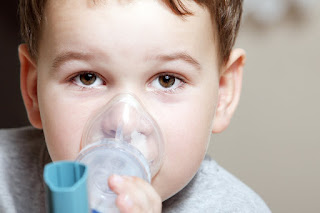The unwanted fungi, which accumulates in the corners of a
house, is scientifically called mold. Mold and mildew actively grow in moist
environments. The most commonly known side effect of mold is the damage that it
causes to furniture, carpets, or any other thing that it lives on. However,
molds are doing more harm than the perceived damage. They are causing serious
harm to your health and the health of your family.
The effect of mold on human health is not equal in all
cases. Elderly people, children, infants, people with respiratory problems, and
people with immuno-compromised diseases tend to be easy victims of mold
influence.
 Asthma and Allergies
Asthma and Allergies
The Environmental Protection Agency conducted a research on
children from 1-7 years of the age. According to the study, children who grow
in an environment with mold at young age (one year) are prone to respiratory
disorders by the age of seven. The study was conducted by Reponen and
colleagues and published in 2011.
Mold has been associated with respiratory disorders and
respiratory allergies. However, it is essential to undergo medical diagnosis to
determine pre-existing allergies and respiratory disorders. Molds aggravate the
pre-existing respiratory disorders. In maximum cases, molds uninterruptedly
trigger the respiratory problems, even if the patient is undergoing authentic
medical treatment. The solution lies in mold eradication followed by proper
medical care.
Diseases Related with Mycotoxin Molds
Mycotoxins are small toxic elements. These are lipid-soluble
and more dangerous than other toxins as these are easily absorbed by skin,
airways, and the intestinal lining. Some indoor molds produce mycotoxins. The
effect of these mycotoxins starts from symptoms like coughing and skin
irritation. If left untreated, these mycotoxic molds lead to fatal diseases
including cancer, pulmonary fibrosis, neurotoxicity, immunologic and
Hematologic disorders, hepatic and renal toxicities, and more
Mold Effect on Pregnant Women
The endocrinal or renal toxicities of pregnant women, who
inhale or absorb mycotoxins produced by molds, increase and lead to
gastrointestinal or cardiac problems.
Pulmonary Hemorrhage
The effect of mold related with pulmonary hemorrhage was
unknown until 1994. From 1993 to 1994, a child died in Cleveland, Ohio in a
strange case. Further studies revealed that the children who had died had been
brought up in houses with mold history or contained mold contaminated water,
leading to pulmonary hemorrhage.
 Fungal Infections
Fungal Infections
Apart from the respiratory disorders, the fungal infections
are also common cause of mold. Indoor mold may grow inside shoes, wardrobe, and
other common items of use. Athlete’s Foot is a common fungal infection caused
by mold infections.
Aspergillus is a common fungal infection caused due to
respiratory disorders. Molds do not directly trigger Aspergillus but it is
indirectly activated when mold triggers respiratory disorders. Similarly, many
infections and allergies triggered by respiratory disorders may be caused in
moldy environments.
Mold control is a process that starts from identification of
mold colonies to their complete eradication. A proper health examinations and
mold examination is highly recommended to treat aforementioned disease.
...............................................................................................................................................
References


No comments:
Post a Comment